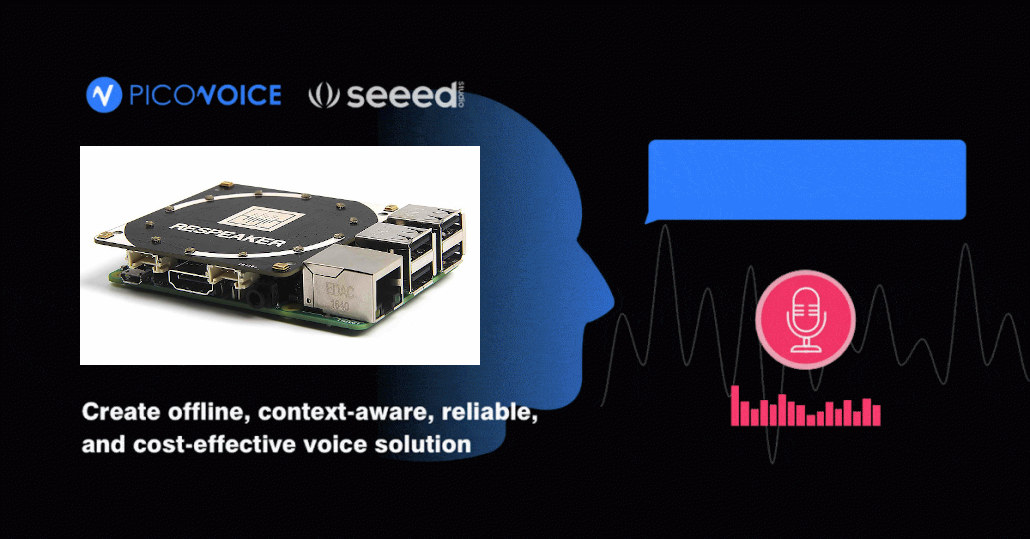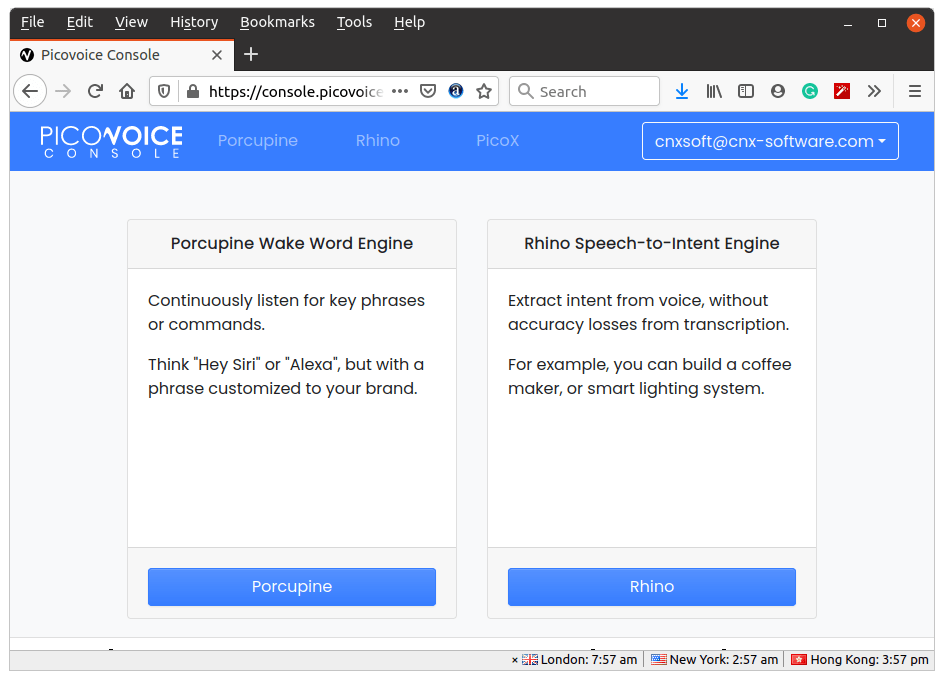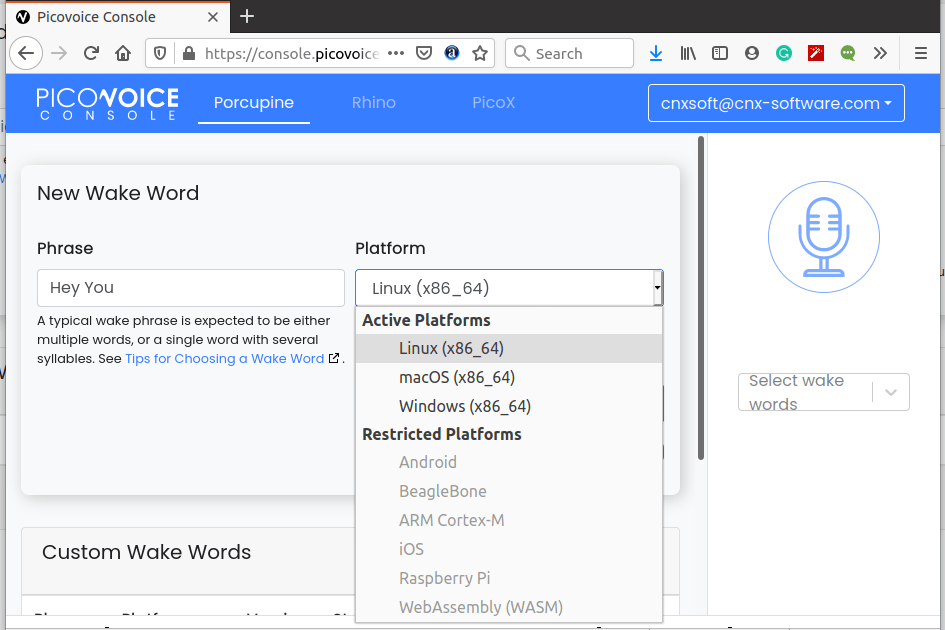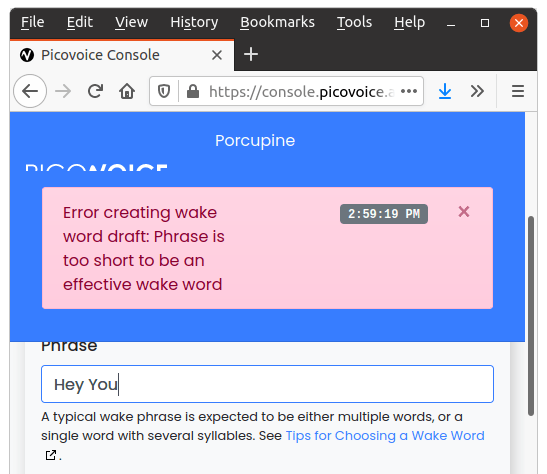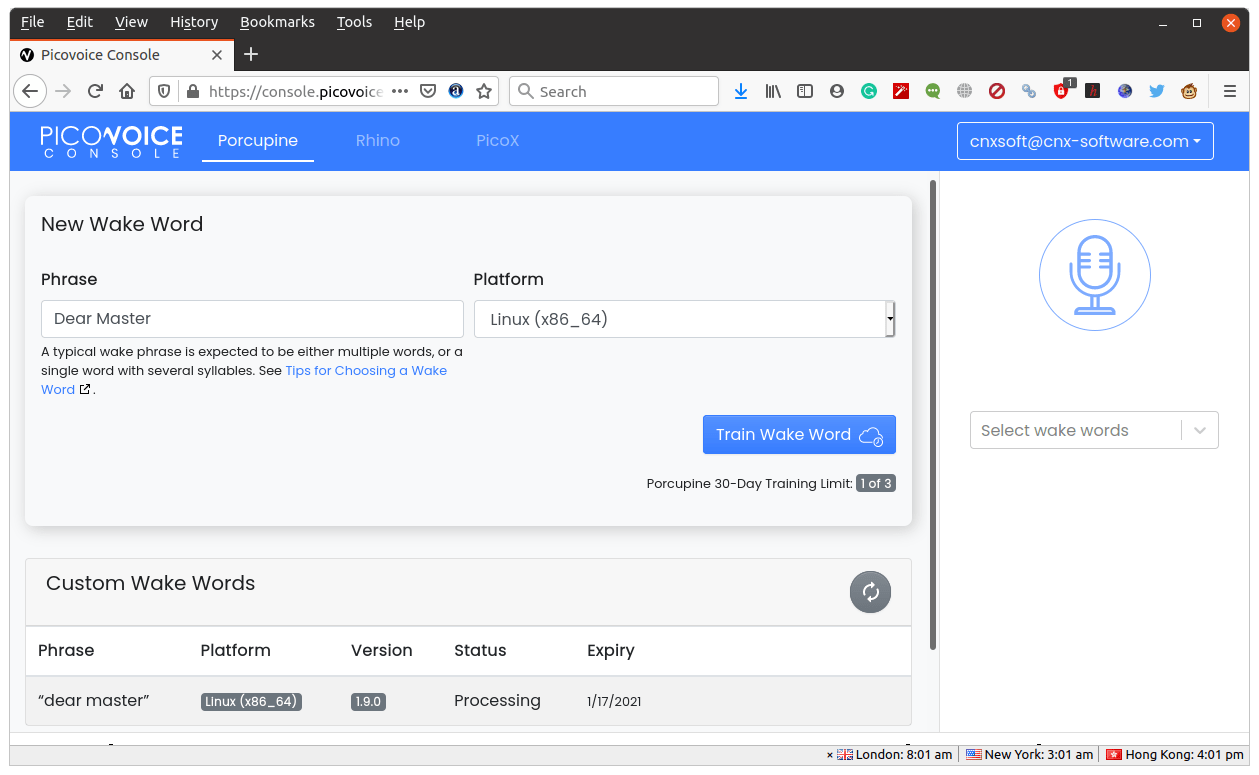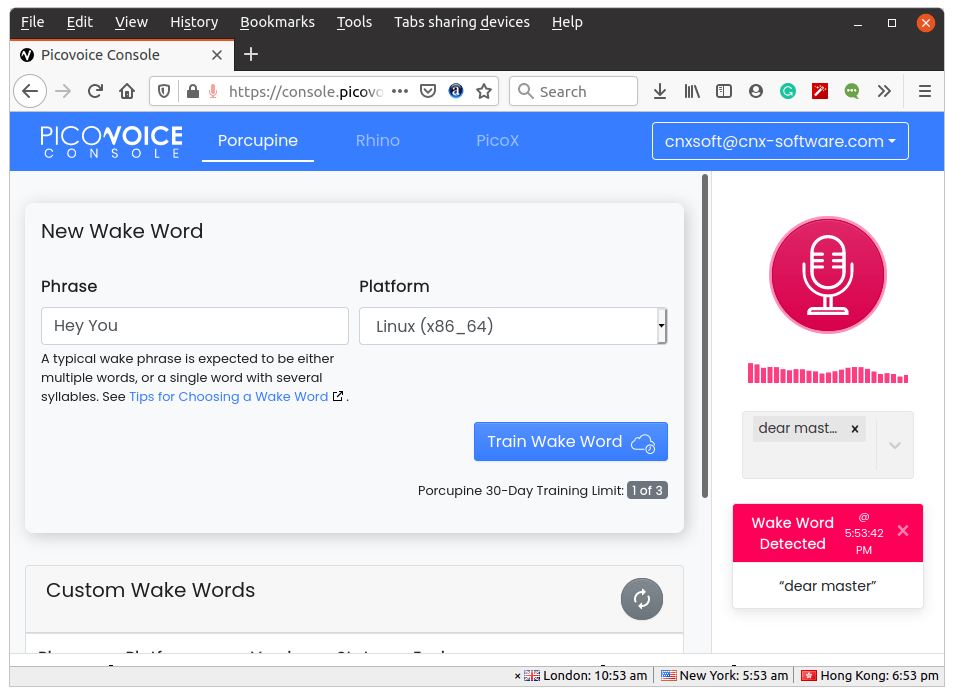ReSpeaker 4-mic array is a Raspberry Pi HAT with four microphones that can work with services such as Google Assistant or Amazon Echo. It was launched in 2017. So nothing new on the hardware front.
What’s new is the expansion board is now supported by Picovoice that works much like other voice assistants except it allows people to create custom wake words and offline voice recognition.
Picovoice is described as an end-to-end platform for building customized voice products with processing running entirely on-device. It is cross-platform, is said to be more resilient to noise and reverberation, and thanks to running offline, it offers low-latency and complies with HIPAA and GDPR privacy regulations.
The platform is comprised of two main engines:
- Porcupine lightweight wake word engine that supports custom wake words trained through PicoVoice console. The engine can listen to multiple wake words and is cross-platform with support for Raspberry Pi, BeagleBone, Android, iOS, Linux (x86_64), macOS (x86_64), Windows (x86_64)
- Rhino Speech-to-Intent engine to understand naturally-spoken commands
For example with a smart coffee machine in your home, you could wake up your smart speaker with a custom wake word handle by Porcupine such as “Hey home sweet home”, and then ask it to make you a cup of coffee through Rhino: “make me a cup of coffee”. It’s also possible to combine both:
Hey home sweet home, make me a cup of coffee
Seeed Studio updated their Wiki to show how to use both PicoVoice’s Porcupine and Rhino using a Python demo running on Raspberry Pi plus ReSpeaker 4-mic array. The demo source code can also be found on Github. It supports nine different wake words: Alexa, Bumblebee, Computer, Hey Google, Hey Siri, Jarvis, Picovoice, Porcupine, and Terminator.
I decided to check out the Picovoice console to check out the process to create a custom wake word. During registration, you’ll be asked for you email address and whether you are an individual or represent a company aiming to create a commercial product. After registration, you’re being asked to select Porcupine wake word engine or Rhino speed-to-intend engine.
Let’s go with Porcupine since I’d like to make a custom keyword. I tried “Hey You”. For some reason, we have to select the OS and target and in this case, I left the default: Linux(x86_64).
It’s possible to select other platforms, but with a personal account only x86 64-bit OSes are active (Linux, Windows, macOS), and Android, Beaglebone, Arm Cortex-M, iOS, Raspberry Pi, and WebAssembly are all restricted. I suppose that the restrictions are only lifted for commercial accounts.
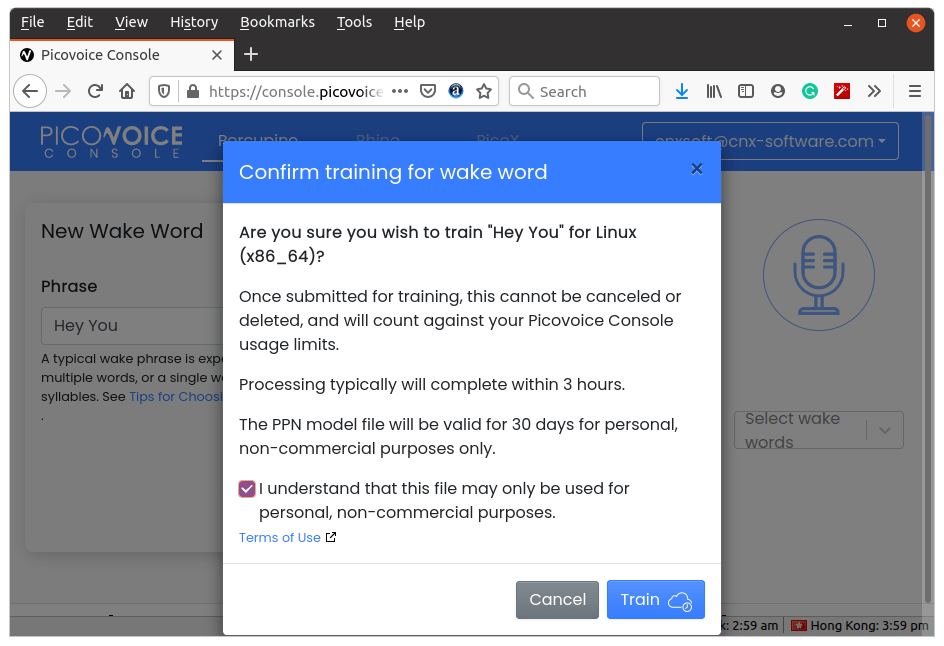
It did not like my wake word since “you” is too short. So I decided to be a good consumer and be submissive to my smart home, and changed that to “dear master”.
We’re told the process can take up to 3 hours, but I received a confirmation email within 20 minutes:
our wake word (“dear master”) has finished training.
You can test the wake word in-browser and download the model file at https://console.picovoice.ai/ppn
I’m not sure how they did it, because I’ve always read making a custom wake word takes time and requires thousands of voice samples.
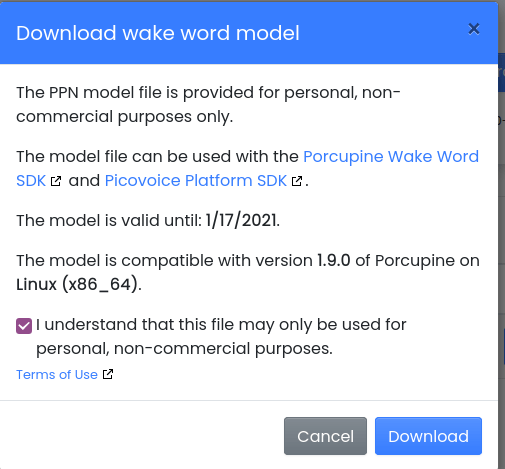
Once the file is downloaded you can integrate it with Porcupine Wake Word SDK and icovoice Platform SDK whose documentation can be found here.
For a quick check, you can also test your new wake word in the web browser. It worked fine for me after adjusting my laptop’s microphone volume properly.

Jean-Luc started CNX Software in 2010 as a part-time endeavor, before quitting his job as a software engineering manager, and starting to write daily news, and reviews full time later in 2011.
Support CNX Software! Donate via cryptocurrencies, become a Patron on Patreon, or purchase goods on Amazon or Aliexpress


